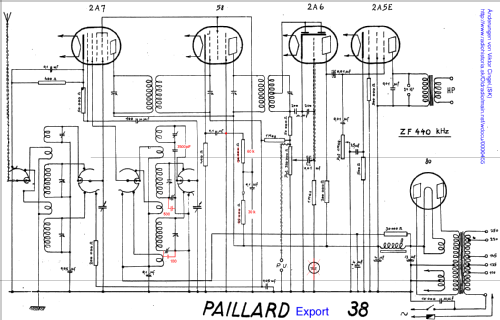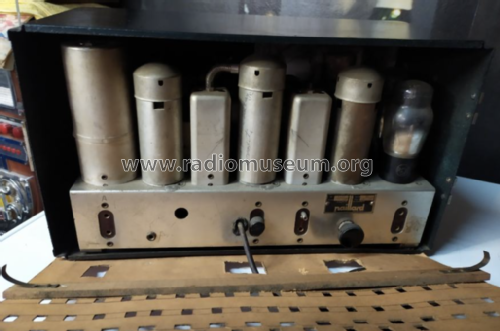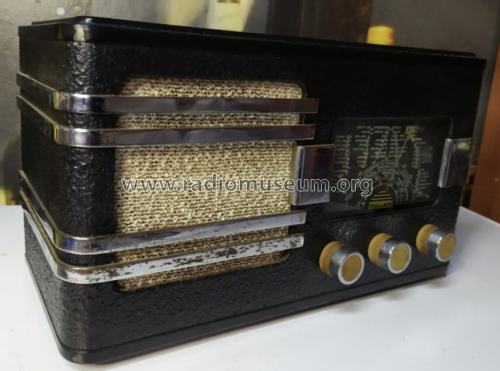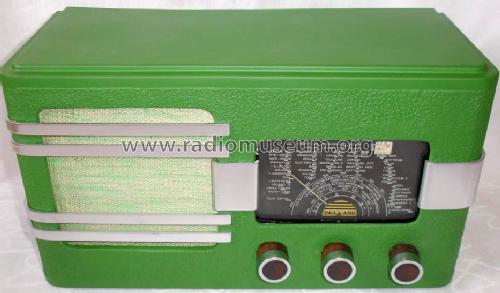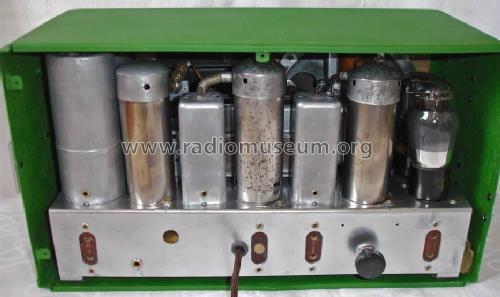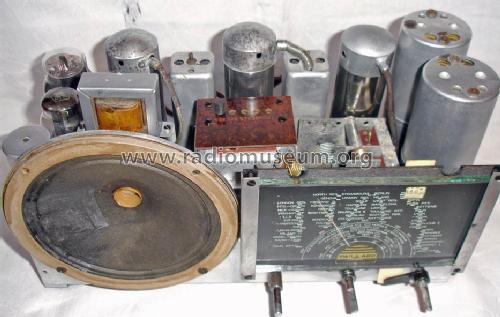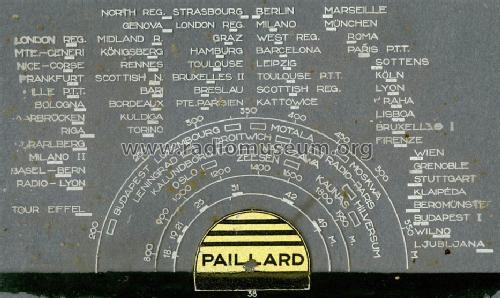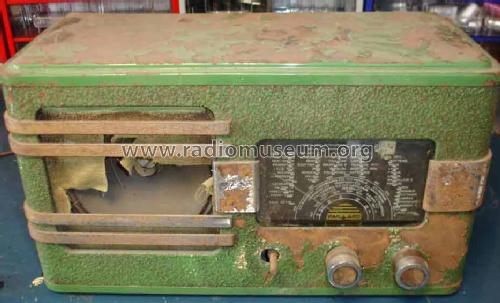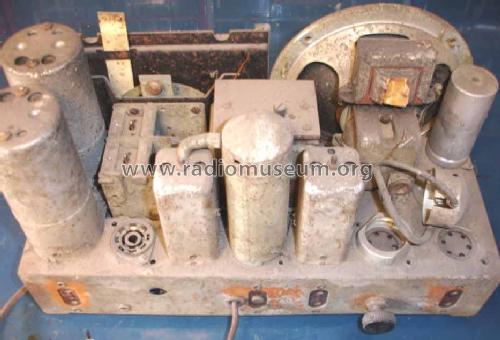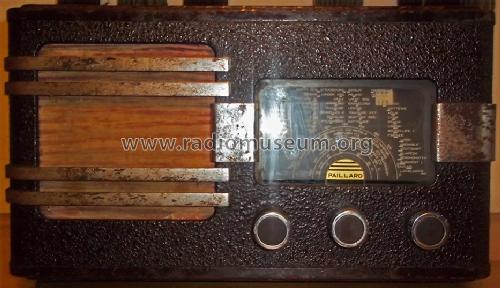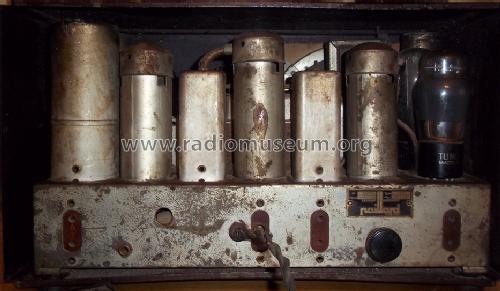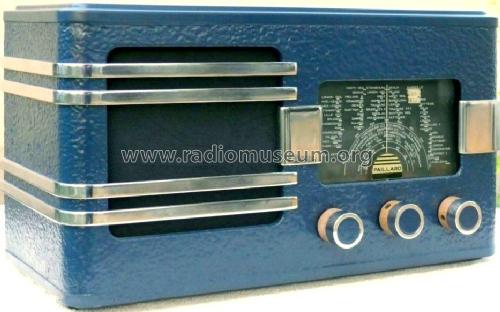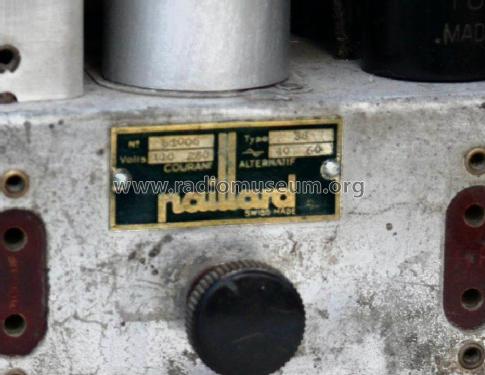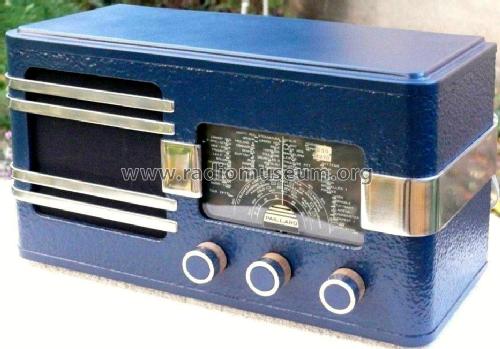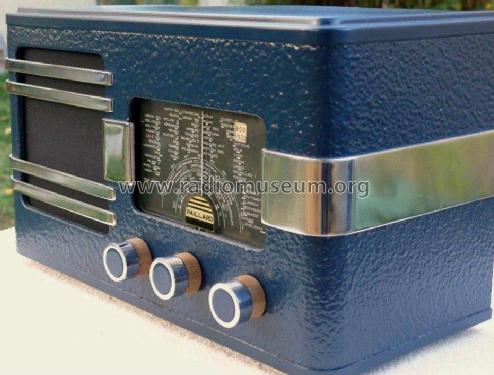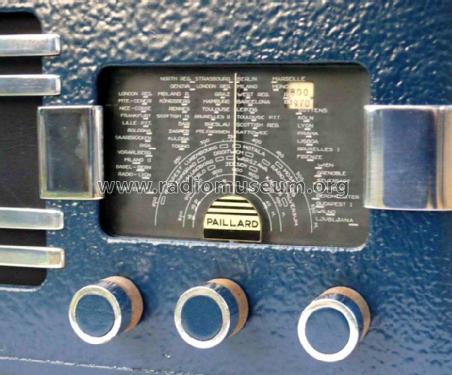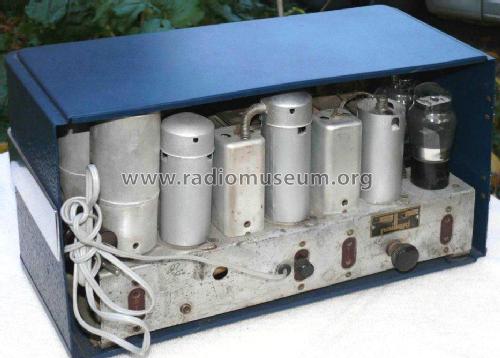Export 38
Paillard AG; St. Croix
- Country
- Switzerland
- Manufacturer / Brand
- Paillard AG; St. Croix
- Year
- 1938/1939
- Category
- Broadcast Receiver - or past WW2 Tuner
- Radiomuseum.org ID
- 130578
Click on the schematic thumbnail to request the schematic as a free document.
- Number of Tubes
- 5
- Main principle
- Superheterodyne (common); ZF/IF 440 kHz; 2 AF stage(s)
- Tuned circuits
- 6 AM circuit(s)
- Wave bands
- Broadcast, Long Wave and Short Wave.
- Power type and voltage
- Alternating Current supply (AC) / 110; 125; 145; 220; 250 Volt
- Loudspeaker
- Electro Magnetic Dynamic LS (moving-coil with field excitation coil)
- Material
- Metal case
- from Radiomuseum.org
- Model: Export 38 - Paillard AG; St. Croix
- Dimensions (WHD)
- 385 x 215 x 170 mm / 15.2 x 8.5 x 6.7 inch
- Notes
- Dieses Modell "Export" (38) entstand auf Grund eines Gerätes aus der Republik Slowkei (Slovakia) in sehr schlechtem Zustand. Klar erkennbarwar aber, dass es sich um das gleiche Chassis wie beim 38TR handelt. Die Wellenbereiche sind LW 800 - 1970 m, MW 200-560 m und KW 17,5 - 51 m. In Ermangelung eines besseren Bildes haben wir die uns zugestellten genommen. Unterlagen für das Modell 38TR haben wir von Januar 1938. Modell 28TR und 38TR können demnach schon im Weihnachtsgeschäft 1937 auf dem Markt gewesen sein, doch haben wir keine Beweise dafür. Mallory-Zelle für die Gittervorspannung ist zu beachten!
- Net weight (2.2 lb = 1 kg)
- 8.6 kg / 18 lb 15.1 oz (18.943 lb)
- External source of data
- Viktor Cingel, Slovakia
- Author
- Model page created by Ernst Erb. See "Data change" for further contributors.
- Other Models
-
Here you find 549 models, 266 with images and 303 with schematics for wireless sets etc. In French: TSF for Télégraphie sans fil.
All listed radios etc. from Paillard AG; St. Croix
Forum contributions about this model: Paillard AG; St.: Export 38
Threads: 1 | Posts: 1
Viktor Cingel:
The schema is drawn in the position of SW,
switch up is for MW and down for LW (as in the original set)
Resistance of input winding of power trafo: 48 Ohm, secondar 2x500Ohm.
Resistance of dynamic winding in laudspeaker 2560 Ohm.
I has to repair thickler for SW: 5 windings, and tuned SW winding (8 w)in oscillator was cut, so this indicated that during the war someone destroyed SW,
which was at that time done in our countries.
If was tuned for 420Khz, in a very good conditions, so I did not touched it.
The input cuircuits as well oscillatro were tuned as described on dial.
The grill damaged, but from a fragment which I found in radio, a copy
was done using very similar grill, colored by green pastel.
The knob is made from wood, with iron ring, a replica was done just from wood
and ring is painted.
The schema is drawn in the position of SW,
switch up is for MW and down for LW (as in the original set)
Resistance of input winding of power trafo: 48 Ohm, secondar 2x500Ohm.
Resistance of dynamic winding in laudspeaker 2560 Ohm.
I has to repair thickler for SW: 5 windings, and tuned SW winding (8 w)in oscillator was cut, so this indicated that during the war someone destroyed SW,
which was at that time done in our countries.
If was tuned for 420Khz, in a very good conditions, so I did not touched it.
The input cuircuits as well oscillatro were tuned as described on dial.
The grill damaged, but from a fragment which I found in radio, a copy
was done using very similar grill, colored by green pastel.
The knob is made from wood, with iron ring, a replica was done just from wood
and ring is painted.
Heribert Jung, 11.May.08
